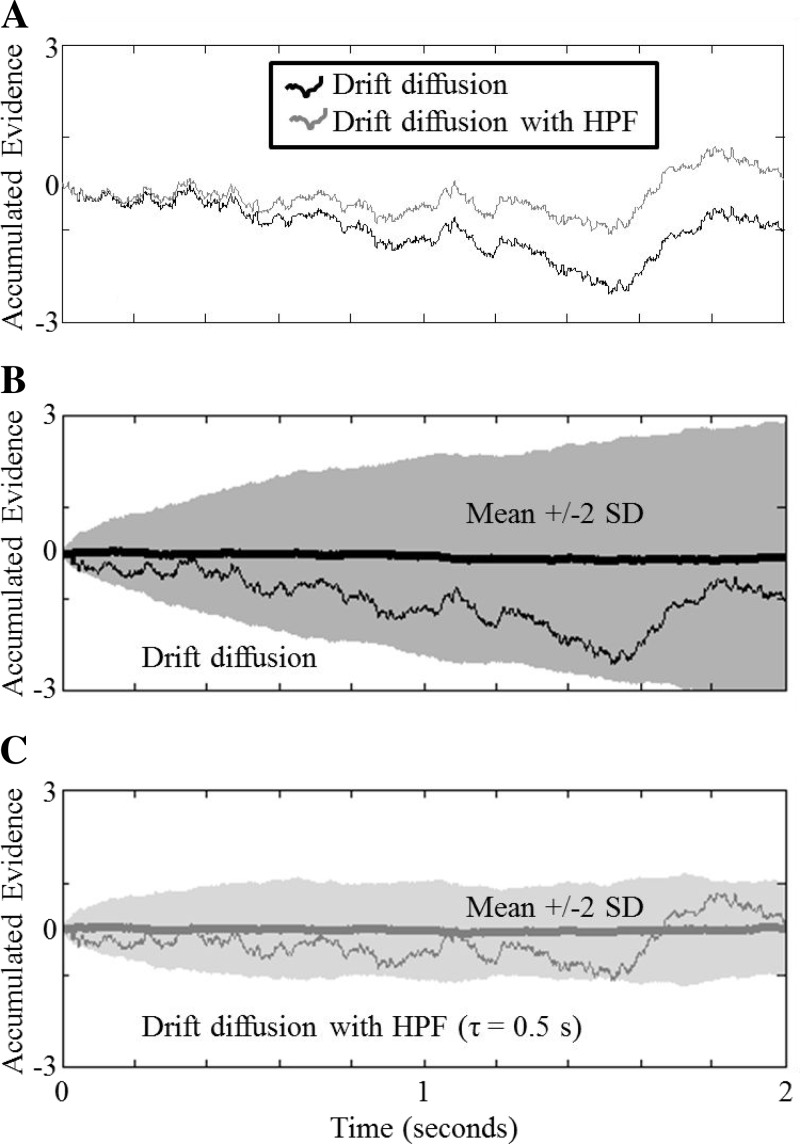Fig. 7.
Effect of a linear, first-order HPF on drift-diffusion trajectories. All simulations have a drift rate of zero and include no decision boundaries to show the effect of accumulation of noise over time. A: an example diffusion trajectory with (gray line) and without (black line) the HPF. The HPF has little effect early but later draws the trajectory back toward the starting level. B: mean ± 2SD of 100 diffusion simulations without filtering over time. These could represent either ensemble parallel population coding or the expected outcome of sequential trials. Whereas the mean remains near the starting level, the SD of the trajectories grows without bound. C: the same trajectories as in B, but with the addition of the HPF with a time constant (τ) of 0.5 s. The HPF causes the SD of the trajectories to remain relatively constant after roughly 2 time constants and to remain strictly bounded in time even for long periods of time.

